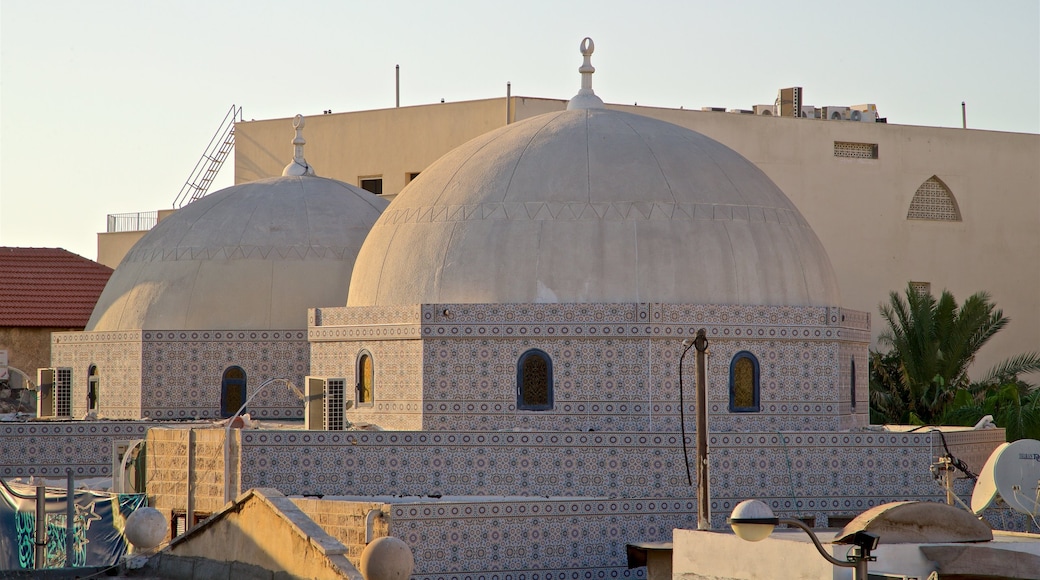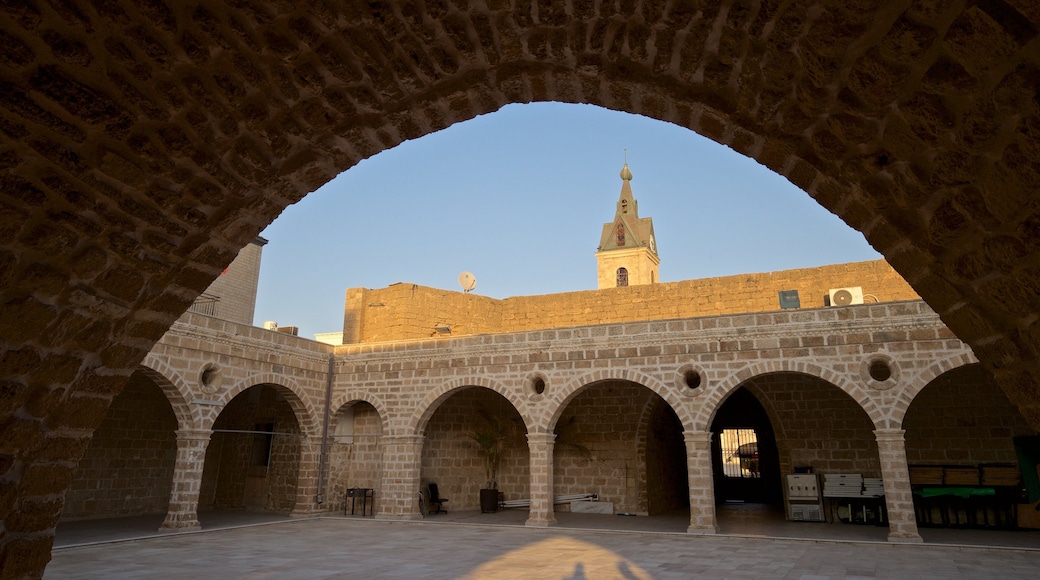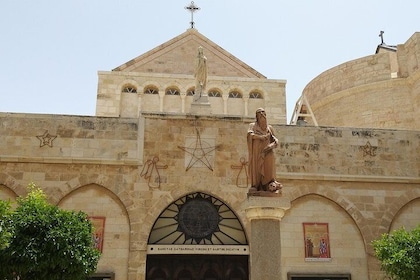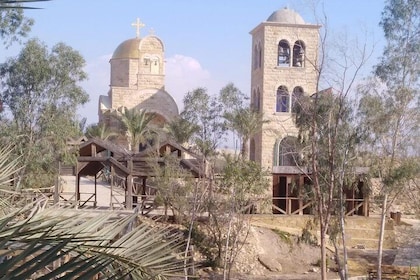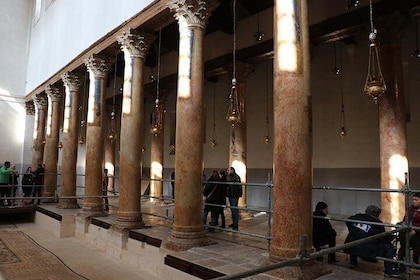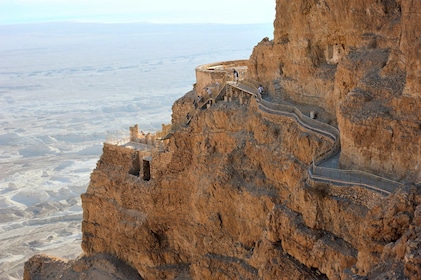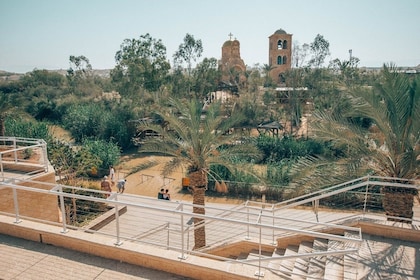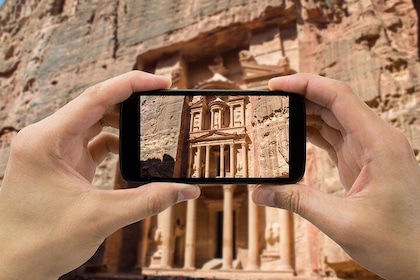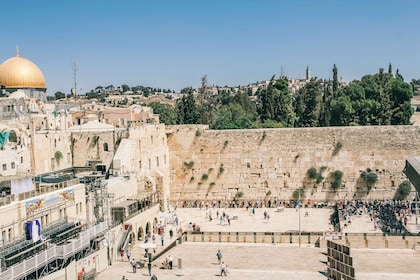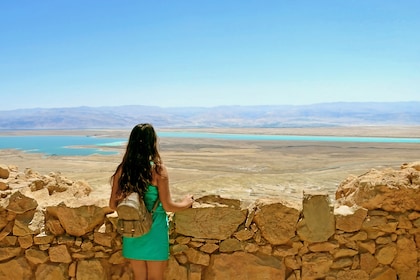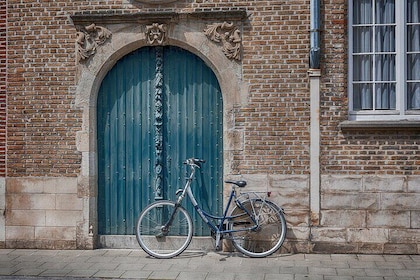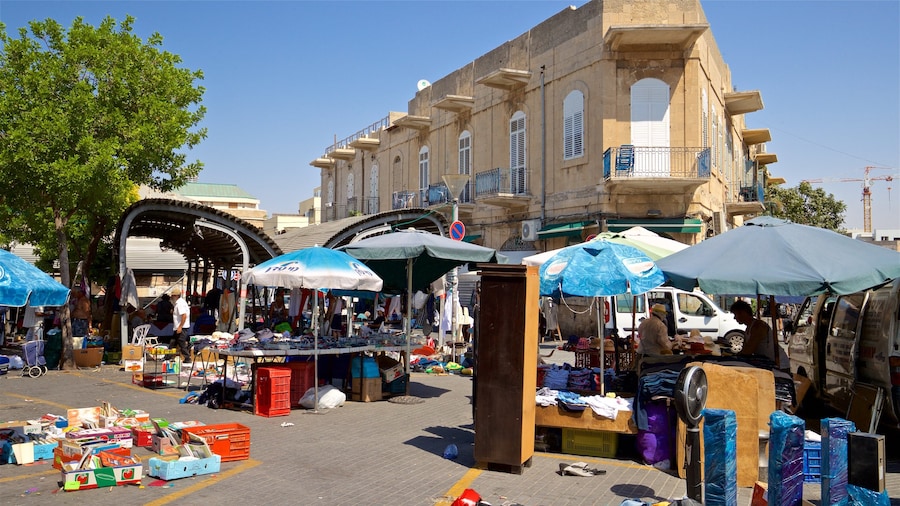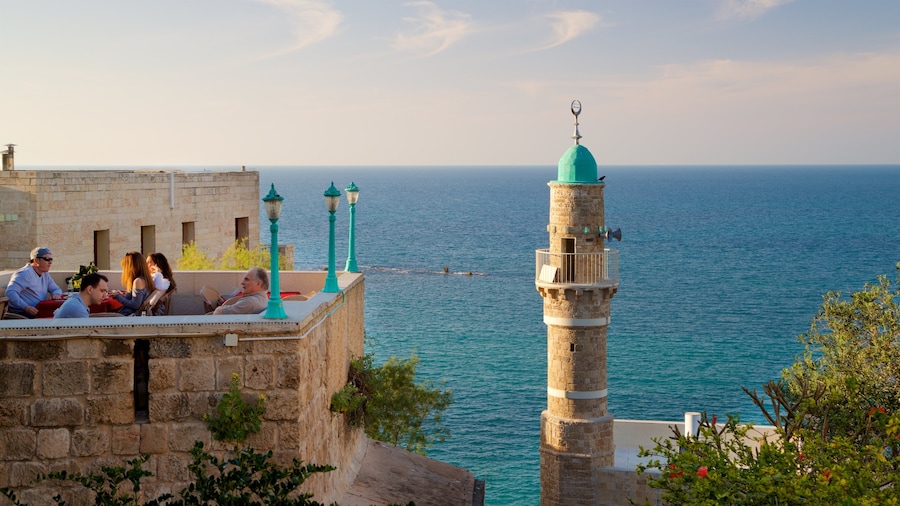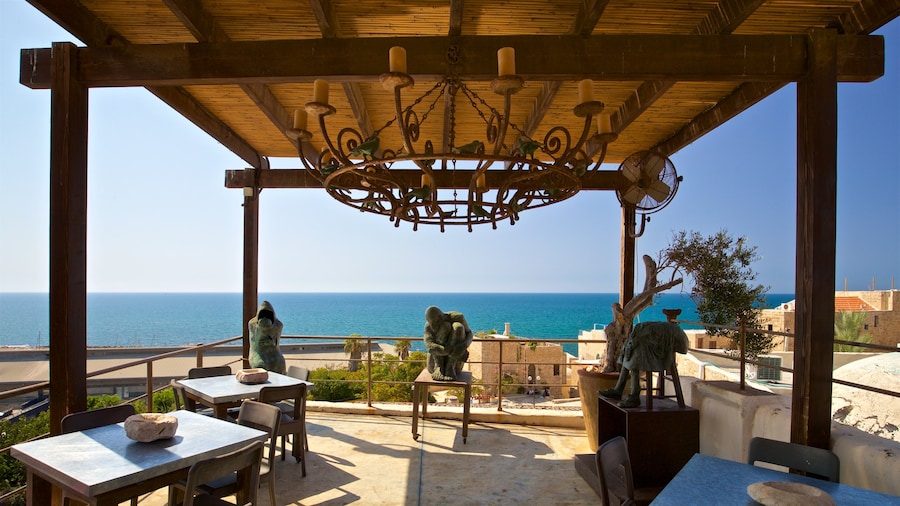Spot the minaret of Mahmoudiya Mosque, Jaffa’s largest mosque, from almost anywhere in Tel Aviv. Get up close to the mosque to see its decorative features.
Also known as the “Great Mosque,” Mahmoudiya is made up of several buildings set around three courtyards. Admire the historic main building, built in 1812, as well as the different parts of the mosque built at various times throughout the 18th and 19th centuries.
Get more out of your visit to the mosque by taking the time to learn a little about its past before you visit it. The building’s construction was ordered by the highly unpopular 19th-century governor of Jaffa, Muhammad Abu Nabut, from whom it takes its name.
The mosque’s main feature is an ornate marble “sabil,” or fountain, which is located at the southern wall. Pause by this beautiful structure to enjoy the soothing sound of its flowing waters. The fountain is believed to have been built by Suleiman Pasha, Governor of Acre from the late 18th to early 19th centuries.
Today, the mosque is an instantly recognizable feature of Jaffa’s ancient streets. Walk the perimeter wall. This is a pleasant way to spend some time and is an ideal activity if you would like to get a feel for this centuries-old part of the city. Spot dozens of decorative doorways and other beautiful features of the ancient mosque as you walk along.
Interestingly, the mosque’s close proximity to other buildings means that no call to prayer is sounded. Despite this, it is still widely used today. Mahmoudiya is the main mosque for the area. Find it busy at key points of the day, when locals come here to worship. Pilgrims also travel from further afield.
A 1-minute walk from Jaffa’s famous clock tower, Mahmoudiya Mosque is easy to find. Do be aware, however, that non-Muslims cannot go inside the building itself. While you are in the area, visit Homat HaYam promenade, Tel Aviv’s most southerly beach. Enjoy the peace and quiet it offers, away from the downtown area.
